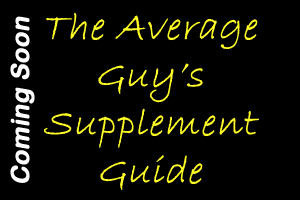Hypertension or high blood pressure has often been referred to as The Silent Killer. It is possible to have high blood pressure and not realize it until symptoms of other disease have shown up. Hypertension is persistently high blood pressure. A diagnosis of hypertension is not made after just one reading, but several. It is a good idea for all of us to be aware of our normal blood pressure. There are blood pressure cuffs in all pharmacies now and we should take advantage of using these at regular intervals. The other alternative is to have an automatic blood pressure cuff at home. "Blood pressure is the force exerted by the blood against a vessel wall. During a normal cardiac cycle, blood pressure reaches a peak that is followed by a trough. The peak or maximum pressure occurs during systole as the left ventricle pumps blood into the aorta.
Normal systolic pressure is 120 mm Hg. The trough occurs during diastole as the ventricles relax. This is the time when minimal pressure is exerted against the arterial walls at all times. Normal diastolic pressure is 80 mm Hg." (Source: Fundamentals of Nursing, Potter and Perry)
"Hypertension is not a single disease entity in the usual sense, but rather a major indicator of the prognosis for future development of cardiovascular, cerebrovascular and renal disease." (Source: Encyclopedia and Dictionary of Medicine Nursing and Allied Health, Miller and Keane)
Hypertension causes thickening and loss of elasticity in the arterial walls. Blood flow to vital organs such as the heart, brain and kidneys decreases. High blood pressure is often asymptomatic which is the problem because with no symptoms there is no reason to seek medical attention. Even if symptoms are present they are often felt to be insignificant and ignored. Factors that have been linked to essential hypertension include
heredity, smoking, high cholesterol, obesity, stress and excess alcohol consumption. Hypertension can be controlled and it's resulting disease processes can also be controlled. Exercise can help to control blood pressure, promote relaxation and control body weight. An excellent resource for more information is www.heartandstroke.com If you go to the "National Site" you will find a button for blood pressure.
The chart below is from the Canadian Heart and Stroke web site. Please refer to it for more in depth information. "Lifestyle changes to manage your high blood pressure. There are two ways to control and manage your blood pressure: medication and lifestyle habits. Medication can help you control your blood pressure, but it cannot cure it. That's why it's important to make sure your lifestyle habits are healthy, too. Smoking, eating salty,
fatty foods, drinking alcohol and being inactive are harmful to your heart and may also raise your blood pressure. Thankfully, making changes to your lifestyle habits are within your control, unlike your family medical history. Studies show that each lifestyle change you make has the potential to lower your blood pressure readings. Look at the chart below to see where you can make a difference." For more information on the DASH diet, please
check out the heart and stroke web site.
Physical Activity – Engaging in moderate or vigorous physical activity 30-60 minutes per week = lowers blood pressure by 4.9/3.7 points (systolic/diastolic)
Weight control – For losing weight, per kilogram lost = lowers blood pressure by 1.1/0.9 points
Diet – By following a DASH diet = lowers blood pressure by 11.4/5/5 points
Sodium (salt) intake – By reducing sodium intake by 1,800 mg = lower blood pressure by 5.12/7 points.
Alcohol consumption – By reducing intake by 3.6 drinks per day = lowers blood pressure by 3.9/2.4 points.
There you have it, the ups and downs on blood pressure. It is the one disease within our control, so if you have a family history of hypertension or have any of the risk factors associated with high blood pressure, please see what you can do to make the changes necessary to maintain a healthy blood pressure.
Till next time,
Narina Prokosch, RN, CPT
